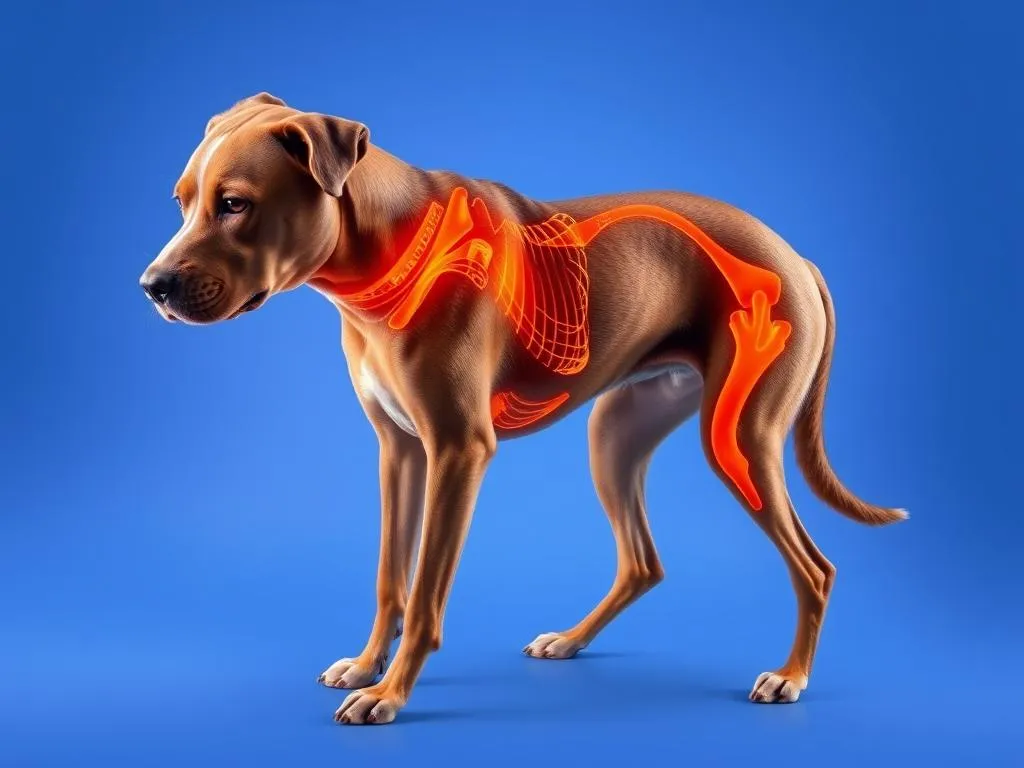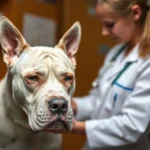
Introduction
Elbow dysplasia in dogs is a term that encompasses a variety of developmental abnormalities affecting the elbow joint. This condition is significant in canine health, primarily because it can lead to chronic pain, reduced mobility, and a decreased quality of life for affected dogs. Understanding elbow dysplasia is crucial for dog owners, especially since it is prevalent in certain breeds, including Labrador Retrievers, Golden Retrievers, and German Shepherds.
The purpose of this article is to educate dog owners about elbow dysplasia, providing comprehensive guidance on its symptoms, diagnosis, treatment, and prevention. By the end of this post, readers will have a better understanding of how to manage this condition effectively and how to ensure their dog’s well-being.
Understanding Elbow Dysplasia
What is Elbow Dysplasia?
Elbow dysplasia is a complex condition that involves the abnormal development of the elbow joint in dogs. The term encompasses several specific conditions, including:
-
Fragmented Coronoid Process (FCP): This occurs when a part of the coronoid process, a bony structure in the elbow joint, becomes fragmented or breaks off, causing pain and joint instability.
-
Osteochondritis Dissecans (OCD): This condition involves the abnormal development of cartilage in the joint, leading to the formation of loose cartilage fragments that can cause pain and inflammation.
-
Ununited Anconeal Process (UAP): This is a developmental defect where a bony projection in the elbow fails to fuse properly, resulting in joint instability.
Each of these conditions can contribute to the overall problem of elbow dysplasia, leading to varying degrees of discomfort and mobility issues in dogs.
Causes and Risk Factors
The exact cause of elbow dysplasia is not fully understood, but several factors can contribute to its development:
-
Genetic Predisposition: Certain breeds are more susceptible to elbow dysplasia due to hereditary factors. Breeds like the Labrador Retriever, Rottweiler, and Saint Bernard are particularly at risk.
-
Nutritional Factors: An improper diet during critical growth phases can lead to obesity and rapid growth, both of which are risk factors for developing joint problems.
-
Growth Rate and Environmental Influences: Rapid growth in puppies, especially in large breeds, can strain the developing joints. Additionally, high-impact activities and repetitive stress during growth can exacerbate the condition.
Understanding these causes and risk factors can help dog owners take preventive measures to protect their pets’ elbow health.
Signs and Symptoms
Common Symptoms to Watch For
Dogs with elbow dysplasia may exhibit a range of symptoms, including:
-
Lameness and Limping: This is often the most noticeable sign, particularly after exercise. Affected dogs may favor one leg or display an uneven gait.
-
Difficulty in Movement or Stiffness: Dogs may struggle to get up or may show stiffness after resting, indicating discomfort in the elbow joint.
-
Swelling Around the Elbow Joint: Inflammation may cause visible swelling, making the elbow appear larger than normal.
Behavioral Changes
In addition to physical signs, changes in behavior can be indicative of elbow dysplasia:
-
Reluctance to Play or Exercise: Dogs may avoid activities they once enjoyed due to pain or discomfort.
-
Changes in Posture or Gait: Owners might notice their dog adopting a different stance or walking in an unusual manner to compensate for pain.
When to Seek Veterinary Advice
Early detection is crucial in managing elbow dysplasia effectively. If you notice any of the above symptoms, it is essential to seek veterinary advice promptly. Early intervention can help prevent further joint damage and improve your dog’s quality of life.
Diagnosis of Elbow Dysplasia
Veterinary Examination
A thorough veterinary examination is the first step in diagnosing elbow dysplasia. Veterinarians will take a detailed history of the dog’s symptoms and conduct a physical examination, checking for tenderness, swelling, and range of motion in the elbow joint.
Diagnostic Imaging Techniques
To confirm a diagnosis, veterinarians often use diagnostic imaging techniques:
-
X-rays: X-rays are typically the first line of imaging used to identify abnormalities in the elbow joint. They can reveal signs of fragmentation, abnormal bone growth, and joint irregularities.
-
Advanced Imaging (CT, MRI): In some cases, more advanced imaging techniques may be required to assess the extent of the damage and to visualize soft tissue structures. These methods can provide a clearer picture of the joint’s condition and help guide treatment options.
Differential Diagnosis
It is essential to differentiate elbow dysplasia from other conditions that may mimic its symptoms. These can include arthritis, fractures, or other joint disorders. A veterinarian will consider these possibilities when evaluating a dog with suspected elbow dysplasia.
Treatment Options
Conservative Management
For some dogs, conservative management can be an effective approach to treating elbow dysplasia:
-
Pain Management Strategies: Non-steroidal anti-inflammatory drugs (NSAIDs) and other pain relief medications can help manage discomfort. Nutritional supplements, such as glucosamine and chondroitin, may also support joint health.
-
Weight Management and Exercise Modification: Maintaining a healthy weight is crucial for reducing stress on the elbow joints. Tailoring an exercise regimen to include low-impact activities, such as swimming or gentle walks, can help keep dogs active without exacerbating their condition.
Surgical Interventions
In more severe cases, surgical intervention may be necessary:
-
Overview of Surgical Options: Surgical procedures can include arthroscopy, which allows veterinarians to remove loose fragments and smooth out damaged cartilage, or joint stabilization surgeries to improve joint function.
-
Post-operative Care and Rehabilitation: After surgery, dogs may require a structured rehabilitation program, including physical therapy, to promote healing and restore mobility.
Long-term Management Strategies
Managing elbow dysplasia is an ongoing process:
-
Ongoing Care and Monitoring: Regular veterinary check-ups are essential to monitor the condition and adjust treatment as necessary.
-
Importance of Follow-up Veterinary Visits: Keeping up with follow-up visits allows for early detection of any complications and helps ensure the best possible outcome for your dog.
Prognosis and Quality of Life
Factors Influencing Prognosis
The prognosis for dogs with elbow dysplasia can vary based on several factors:
-
Age of the Dog at Diagnosis: Dogs diagnosed at a younger age may have a better chance of successful management compared to older dogs.
-
Severity of the Condition: The severity of the dysplasia will also play a significant role in determining the long-term outcome.
Impact on Quality of Life
Managing elbow dysplasia effectively can significantly enhance a dog’s quality of life:
-
Managing Chronic Pain: With appropriate treatment, many dogs can live comfortably and enjoy an active lifestyle.
-
Enhancing Mobility Through Therapy: Physical therapy and rehabilitation can help improve joint function and mobility, allowing dogs to participate in activities they love.
Success Stories and Case Studies
Many dogs diagnosed with elbow dysplasia go on to lead fulfilling lives with the right management strategies. Success stories often showcase how owners can adapt their care and lifestyle to accommodate their pet’s needs, ensuring that their dogs remain happy and active.
Preventive Measures
Genetic Considerations
One of the most effective preventive measures against elbow dysplasia is selecting a responsible breeder. Breeders who screen for elbow dysplasia and other genetic conditions can help reduce the risk of passing on this trait to puppies.
Nutritional Guidelines
Providing a proper diet is essential for joint health:
- Proper Diet to Support Joint Health: Feeding high-quality dog food that meets the nutritional needs of growing puppies can help prevent developmental issues that lead to elbow dysplasia.
Exercise and Weight Management
Maintaining a healthy weight and exercise routine is vital:
-
Recommended Exercise Routines: Regular, moderate exercise can help strengthen the muscles around the elbow joint, improving stability and reducing the risk of injury.
-
Avoiding Overly Strenuous Activities During Growth Phases: Limiting high-impact activities during critical growth periods can help mitigate the risks associated with elbow dysplasia.
Conclusion
In summary, elbow dysplasia in dogs is a serious condition that can significantly impact a dog’s quality of life. Understanding the symptoms, diagnosis, treatment options, and preventive measures is crucial for dog owners. By being proactive and seeking veterinary advice, owners can help manage this condition effectively and ensure their pets lead happy, active lives.
Regular veterinary check-ups and vigilance are essential in monitoring a dog’s joint health. By staying informed and addressing any concerns early, dog owners can make a positive difference in their pets’ well-being.
FAQs Section
Common Questions About Elbow Dysplasia
-
Can elbow dysplasia be cured?
While there is no definitive cure, effective management strategies can significantly improve a dog’s quality of life. -
What breeds are most at risk?
Breeds such as Labrador Retrievers, Rottweilers, and Golden Retrievers are among those most commonly affected by elbow dysplasia. -
How can I improve my dog’s quality of life with elbow dysplasia?
Implementing a combination of pain management, weight control, appropriate exercise, and regular veterinary care can enhance your dog’s quality of life.









